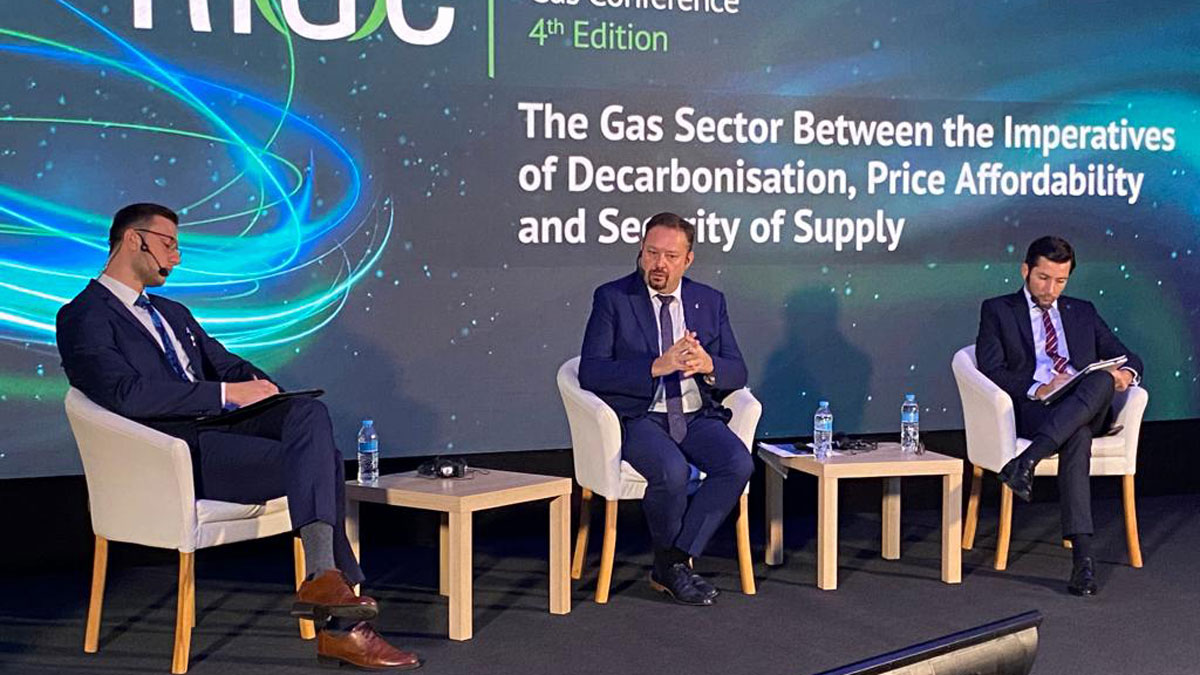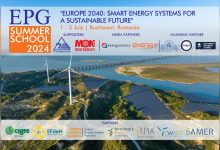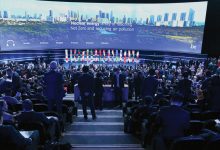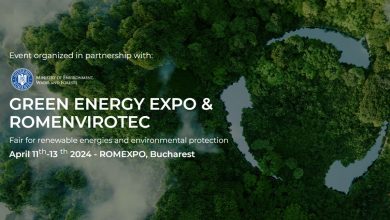RIGC 2021 Day 2
The Importance of Natural Gas in the Romanian Energy Transition
Discussions focused on the role of natural gas in the energy transition equation continued on the second day of RIGC 2021 with the presentation of the various types of fuels, EU taxonomy on sustainable investments, low-carbon technologies, uses of natural gas for the future, new regulations proposed by the European Commission on gas and power, funding solutions for a sustainable development.
Liberty Steel Group to be the world’s first carbon neutral steel company by 2030
Liberty Steel Group, a fully integrated steel and mining business with a global presence in 12 countries, is committed to becoming carbon neutral by 2030, a very ambitious target, says Theuns Victor – Executive General Manager of the company.
The group’s strategy involves greater use of steel recycling, development and application of low carbon and renewable energy to power processes, and application of breakthrough technologies such as hydrogen steel making.
Liberty Steel’s strategy focuses on using electric arc furnaces to recycle scrap steel, rather than producing all material from scratch, as well as using renewable sources of energy. Steel from recycled scrap using fossil fuel-based energy generates less than a third of the CO2 emissions compared with primary steel making, with the benefit dramatically increasing to almost zero emissions with the use of renewable power.
H2 production at an affordable price involves however a number of challenges: efficiency of conversion, high capital costs, requirements related to storage and transport. Due to the significant technological progress, there is an increase in process efficiency from 65% to 95%. The looming solution to an affordable H2 price is given by the use of a complex mix. Installing new units involves however serious investment, requiring a stable project to attempt new technologies. Transition to H2 will be a gradual process, accompanied by monitoring, within which the first phase is the use of natural gas, the representative of Liberty Steel mentions. A DRI plant uses natural gas, and potentially hydrogen, instead of coal to reduce iron ore, resulting in a large reduction in CO2 emissions compared with blast furnace ironmaking.
OMV Petrom’s Transition to low and zero carbon
Franck Neel – Executive Board, Downstream Gas Division, OMV Petrom and President of FPPG, reminded in his speech the main objectives of OMV Petrom included in the company’s 2030 Strategy. OMV Petrom aims to lead the energy transition in South-East Europe, capitalizing on opportunities in their emerging markets. The strategy is built on three directions: Transition to low and zero carbon, Grow regional gas, and Optimize traditional business.
The share of gas in the company’s hydrocarbon production mix will increase to around 70%, reflecting the pivotal role of natural gas as a transition fuel in the energy mix in Romania. The increase in equity gas will also support the country’s efforts to decarbonize, as gas can replace coal in power generation and enable integration of renewable capacities.
The company will also intensify investments to seize opportunities in carbon capture and storage, as well as in hydrogen, which are anticipated to have a significant contribution to the decarbonization of the country. As such, the company’s portfolio will be expanded to include five new zero and low carbon business activities, which together will account for around 35% of cumulated CAPEX by 2030 and approximately 15% of the total 2030 Clean CCS EBIT. A low carbon mobility infrastructure will be developed, with more than 500 points of alternative fuels. This includes the largest network for electric vehicles in OMV Petrom’s operating region by 2030, as well as LNG mobility and CNG investments.
In brief: OMV Petrom will lead the energy transition in South-East Europe, capitalizing on emerging market opportunities; The company is committed to achieving Net Zero operations by 2050; By 2030 the company will reduce the carbon emissions of its operations by ~30%, gas will make up 70% of its hydrocarbon production and ~35% of its CAPEX will shift to low and zero carbon business.
A special attention was granted to Neptun Deep development – the company’s most important strategic project. Subject to Final Investment Decision in 2022/2023, first gas is expected approximately four years later. Franck Neel warned that, if Romania fails to invest in the Black Sea project, the share of imported gas would grow from 20% to around 50% of the consumption needs. To facilitate investments, amendments to the offshore law are needed, expected to take place by year-end.
Second-generation biomethane, a very promising solution
In the opinion of Eric Stab – CEO, Engie Romania, the use of natural gas will be phased out, but for many years from now on this resource will remain a way of eliminating polluting fuels, such as coal.
For a number of users, for now there isn’t a credible alternative, given that in Romania there are over 4 million households using natural gas for heating. He believes that heat pumps are not a viable solution; electric heating is not very extended, requiring significant investments. Therefore, natural gas is and remains a very good option and an impetus for developing consumption.
Supply and distribution companies, together with authorities, should make a collective effort to find solutions to reduce the carbon footprint, said Eric Stab.
Engie official also referred to other sources of renewable gases, such as first- and second-generation biomethane, agricultural and urban organic waste, which can be converted into biogas. Second-generation biomethane is a very promising solution to gradually replace natural gas, Engie currently working on a pilot project in this field. For now, there is no biomethane in production in Romania, but only biogas, a legislative framework for this costlier solution being needed first.
Engie, member of the European Clean Hydrogen Alliance, is interested in H2 development projects in Romania, planning to implement a clean H2 strategy, supported by subsidies.
H2, a distant heating option
Discussing about the inclusion of natural gas in EU taxonomy, Razvan Nicolescu – Member of the Governing Board, European Institute of Innovation and Technology (EIT), made some recommendations on extending the use of this resource as a heating solution. The energy expert believes that coal replacement with natural gas can be a good solution, but not in the medium and long term. In his opinion, H2 is a distant heating solution, green H2 being able to be used in transport, for trucks, in the aviation industry, but not for heating.
“Romania must be smart and spend the non-reimbursable funds allocated in a clever way, and money should be distributed based on competitiveness, fairly between the state and the private sectors,” Razvan Nicolescu pointed out.
He sees the role of natural gas in power production as a basic source, for a while, then following to represent a balancing factor.
At global level, nuclear projects register delays due to cost problems, while coal phase-out is taking place earlier. Under these circumstances, we need natural gas as a transition fuel, Razvan Nicolescu stressed.
Making environmental solutions financially profitable
The Bellona Foundation is an independent non-profit organization that aims to meet and fight the climate challenges, by identifying and implementing sustainable environmental solutions. Bellona focuses in the areas of renewable energy, transport, shipping, building technologies, as well as a broad range of climate friendly technologies such as carbon capture and storage. Bellona Europa works primarily on transport, industrial decarbonization and on negative emissions (carbon dioxide removal).
Lina Strandvåg Nagell – Sustainable Finance & Economy Manager, Bellona Europa, exposed the European prospects regarding the decarbonization of industrial processes, so necessary to reach the EU sustainable development goals.
The association participates together with EPG in a number of projects, like ‘Climate Change Mitigation and Adaptation’ program area by focusing on the challenge of achieving the deep reduction of GHG emissions across all sectors of the European economy by 2050 through deployment of carbon capture and storage (CCS) technologies.
Important messages
At the end of the day, Catalin Nita – Executive Director of FPPG – noticed with regret that although debates on the solutions necessary to transform the energy sector in Romania have been continuing for years, in fact things haven’t changed much.
“We are at the eleventh hour regarding the opportunity provided by natural gas, we always discuss about what we can do, we have been exploiting hydrocarbons for over 160 years, we have huge advantages through the qualified workforce, but we lack elementary things, the will to make things happen. We discuss about extremely advanced technologies, but we have an obsolete legislative framework, we discuss about hydrogen, but we don’t bring the Black Sea gas to shore, we make investments in infrastructure, but we don’t bring gas in the pipelines.”
“The opportunity is not waiting for us, we are in the station, the train is moving, but we are still thinking whether to get on it or not,” added Catalin Nita.
Moreover, the FPPG director also said, the steel industry is looking for solutions by itself, the oil and gas industry has an extremely ambitious plan – EUR 11bln in Romanian Energy Sector by 2030 (OMV Petrom), gas distributors and suppliers are thinking about alternative solutions. The question is what the involvement of the Romanian state in this endeavour is. This comes in addition to challenges related to the digitization process in the industry, in the context of European developments.
A glimpse into the natural gas market from the consumer’s perspective was brought to the audience’s attention by Adrian Maniutiu – Communication Specialist. In his opinion, there are two Romania: one which debates at international level wonderful concepts, such as Green Deal, Fit for 55, Clean H2, CCS, advanced technologies, and another, in the middle of Apuseni Mountains and not only, completely torn from the reality discussed at international conferences and which are literally facing energy poverty. It would be important to find balance between these different worlds. To have a mass adoption, we should create a favourable perception, supported by a political context, also favourable, the expert concluded.







